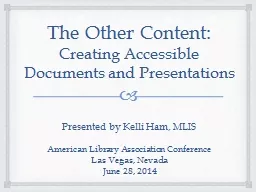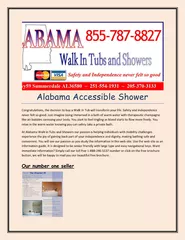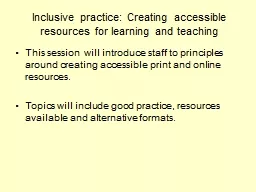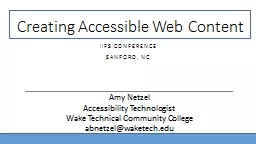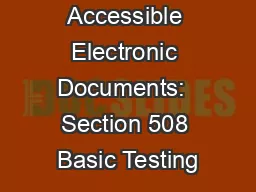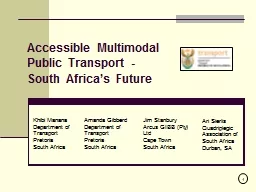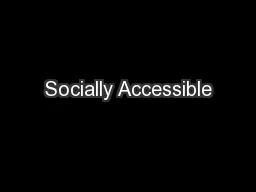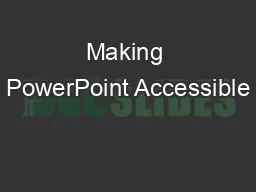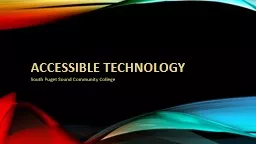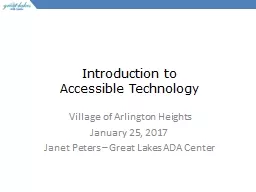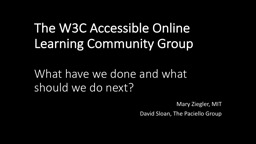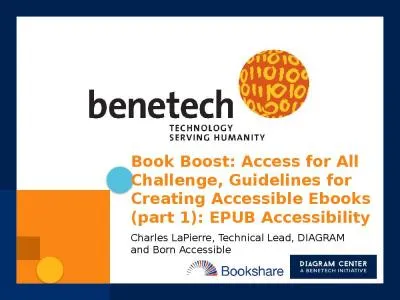PPT-Accessible Content That Looks Great Too:
Author : tatyana-admore | Published Date : 2020-01-22
Accessible Content That Looks Great Too Best Practices for Creating Userfriendly Presentations and Documents Presented by Kelli Ham MLIS Midday at the Oasis November
Presentation Embed Code
Download Presentation
Download Presentation The PPT/PDF document "Accessible Content That Looks Great Too:" is the property of its rightful owner. Permission is granted to download and print the materials on this website for personal, non-commercial use only, and to display it on your personal computer provided you do not modify the materials and that you retain all copyright notices contained in the materials. By downloading content from our website, you accept the terms of this agreement.
Accessible Content That Looks Great Too:: Transcript
Download Rules Of Document
"Accessible Content That Looks Great Too:"The content belongs to its owner. You may download and print it for personal use, without modification, and keep all copyright notices. By downloading, you agree to these terms.
Related Documents

